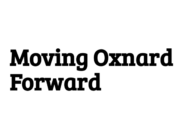Minnesota was one of eight states to raise contribution limits in 2013, but according to some, the Gopher State hasn’t gone far enough to resolve concerns surrounding its campaign finance system. The AP reports:
Minnesota campaign finance regulators are wrestling with how to maintain proper separation between candidates and political groups independently spending money on key races. An attorney for an undisclosed candidate has asked the state campaign finance board whether the candidate could help raise money for a group that may spend money later to influence the person’s election. The board deferred action Tuesday on an advisory opinion.
Minnesota’s position is not unusual. The trend of increasing independent expenditures in elections has caused concern among policymakers that candidates and political parties are weakened in an era of rising independent spending. A simple way to address this would be to liberalize campaign contributions. The recent band of states raising contribution limits is a good start, but changes should go further, as Minnesota’s case demonstrates.
Individuals have been able to spend unlimited amounts on independent speech in every state since 1976’s Supreme Court decision in Buckley v. Valeo. 2010’s Citizens United and SpeechNow.org decisions extended that right to groups of people, such as corporations, trade associations, and unions.
While independent speech cannot be limited, direct contributions to candidates from individuals (and groups like political parties and PACs) are severely limited in many states. Even after 2013’s contribution limit increases, Minnesotans are able to give just $1,000 (formerly $500) in election years to candidates for the Minnesota House of Representatives or the Minnesota Senate. Fewer than ten states have lower limits than Minnesota’s for individuals donating to State Senate or State House candidates. Minnesota’s limit on contributions to gubernatorial candidates is also still lower than most states, now at $4,000 (formerly $2,000) in election years.
Contribution limits are often framed as a policy to determine how much money is spent by wealthy donors on political speech, but that isn’t really the case. Because independent expenditures cannot be limited, states cannot determine how much anyone spends on speech in elections. What they can do is incentivize how that money is spent by imposing contribution limits and other restrictions on political spending.
Once we understand this, we see that limits on campaign contributions don’t block money from entering politics; they just redirect it to independent speakers. Now, it should be noted that the potential negative effects of independent spending are overblown (see here, here, here, and here for starters), but it is true that its prominence in elections has grown. If states want to change that trend, first they need to stop encouraging it. Raising contribution limits will shift money back towards candidates and parties and away from independent groups. Considering the evidence that contribution limits do not improve government, there shouldn’t be any significant drawbacks to doing so.














